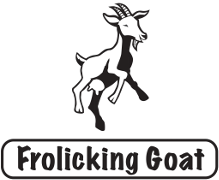Many of us are aware that sparking wine produced outside of the Champagne region in France should not be called Champagne. Similarly, the regional name Hermitage has been replaced by the grape variety Shiraz/Syrah.
This is due to the French certification system of Appellation d’origine contrôlée (AOC) – “controlled designation of origin”. AOC certification for a wine, cheese or other food specify the region the product is made in, the soil types, the raw ingredients (e.g. grape varieties, type of milk or even breed of animal), how it is made and much more. This factors influence the uniqueness of the product. Some of this is the basis of the French concept of Terroir.
The Italians have similar systems of DOC and DOCG.
There is also a European system of Protected designation of origin (PDO). For French products, my reading tells me that some AOC certified products have been promoted to the wider coverage of PDO certification.
in 2002, Greece won a long battle to have Feta protected as a PDO product.
The PDO specifies that Feta is a brined white cheese made from a minimum of 70% ewe’s milk and 0-30% goat’s milk.
Furthermore,
The geographical zone in which the milk is produced from which Feta cheese is made is defined by the administrative boundaries of the following areas:
-
Geographical section of Mainland Greece: the prefectures of Attica,
Viotia, Fthiotida, Fokida, Euritania, Etolia-Akarnam’a and Evia.
-
Geographical section of the Péloponnèse: the prefectures of Corinth, Argolida, Arkadia, Achaia, Ilia, Lakonia and Messinia.
-
Geographical section of Thessalia: the prefectures of Larissa, Trikala, Karditsa and Magnissia.
-
Geographical section of Epirus: the prefectures of loannina, Thesprotia, Arta and Preveza.
-
Geographical section of Macedonia: the prefectures of Thessalonika, Halkidiki, Kilkis, Imathia, Pieria, Pellas, Florina, Kozani, Kastori a, Grevena, Kavala, Drama and Serres.
-
Geographical section of Thrace: the prefectures of Evros, Xanthi and Rodopi.
-
The prefecture of Lesbos.
It is prohibited to use milk from areas other than those stipulated above in the preparation of Feta cheese.
and
ewe’s and goat’s milk contain no carotene, with the result that the rennin produced by it is naturally white in colour, unlike the rennin produced by cow’s milk, which is yellowish in colour.
In order to make the latter white, various colourings are added to the milk to be made into cheese; apart from the fact that these are not natural components of the milk, moves are already being made at Community level to prohibit their use;
The PDO document also describes that Feta is not made using ultra-filtration. Basically, ultra-filtration is the pushing of milk through a very skinny tube and/or membranes. The liquid that comes out the end is permeate used by by cow dairy to standardise milk. The remaining thicker mixture is used to make cheese in the style of what is known as Danish “white brined cheese”.
For more information see
http://ec.europa.eu/agriculture/quality/door/documentDisplay.html?chkDocument=4782_1_en.
For more PDO specifications on other products you can search the http://ec.europa.eu/agriculture/quality/door/list.html.
